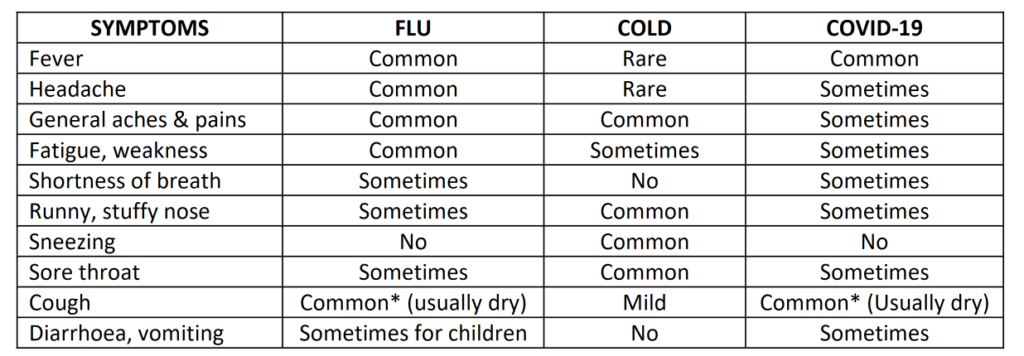Cough, cold and flu Size of Market:
• The category has doubled in growth YTD, albeit from a low base in 2021 due to lockdown. +6% versus 2020.
• The season looks like it will continue well into the summer months.
• Cough medicines have experienced the largest demand followed by cold remedies and decongestants.
• Minimum NPD from year to year.
• A brand-led category.
Written by Denis O’Driscoll, Superintendent Pharmacist, LloydsPharmacy

Community pharmacists are most often the first destination for patients with symptoms of cold or flu. Friendly pharmacy colleagues and pharmacists who take the time to engage with the patients, offer some useful practical tips and recommend suitable products to meet their needs can make a real difference to the patient.
A simple WWHAM interview will reveal the patient’s symptoms and the products that they may have tried already as well as any existing medical conditions and current medication. This will allow the pharmacy colleagues to recommend products that will best meet the needs of the patient.
For inexperienced colleagues, the cold & flu section is the most challenging section to become familiar with due to the large range of products and the overlap between the products. Staff training is particularly important, and colleagues should be encouraged to read patient information leaflets and literature from the manufacturers. Many manufacturers now have online training modules for specific ailments and product recommendations. Before recommending more than one product at a time, the colleagues must check with the pharmacist that this is ok.
Pharmacists will also exercise their professional judgement and will know if the patient needs to be referred to a GP. On the LloydsPharmacy website, there are links to Online Doctor services. For example, if a patient with asthma is experiencing shortness of breath, if the symptoms have been ongoing for 2 weeks without signs of improvement or if there are signs of an infection such as a sinus infection, chest infection or a sore throat.


Denis O’Driscoll recommends the following tips on preventing the spread of cold and flu
1. Avoid Close Contact
Avoid close contact with people who are sick. When you are sick, keep your distance from others to protect them from getting sick too.
2. Stay home when you are sick
Stay home from work, school, and errands when you are sick. This will help prevent spreading your illness to others.
3. Cover your mouth and nose
Cover your mouth and nose with a tissue or the crook of your elbow when coughing or sneezing. It may prevent those around you from getting sick. Flu viruses spread mainly by droplets made when people with flu cough, sneeze or talk.
4. Clean your hands
Washing your hands often will help protect you from germs. If soap and water are not available, use an alcohol-based hand rub.
5. Avoid touching your eyes, nose or mouth
Germs can be spread when a person touches something that is contaminated with germs and then touches his or her eyes, nose, or mouth.
Clean and protect
Clean and disinfect frequently touched surfaces at home, work or
school, especially when someone is ill.
6. Stay healthy and active
Get plenty of sleep, be physically active, manage your stress, drink plenty of fluids, and eat nutritious food.
Products and Active Ingredients
• Painkillers = analgesics
• Decongestants = shrink blood vessels and decrease the swelling and lining of the nose
• Antihistamines = dry up secretions produced by viral infection, help with sneezing and runny eyes, cause drowsiness
• Vitamin C = may help prevent cold symptoms and decrease duration, anti-oxidant properties and enhance healing
• Caffeine = increases absorption of painkiller
• Local anaesthetics = numb nerves in local area, found in lozenges and sprays for sore throats
Promoting uptake of the Seasonal Influenza Vaccine
Getting the flu vaccine is the best way we can protect ourselves and our families from getting the flu. The best time to get the flu vaccine is before the flu season starts. It is available from October to the end of April each year. Last flu season, the vaccine protected against 4 strains of flu. These are
recommended by the World Health Organization (WHO) as the strains most likely to be circulating during the flu season.. Influenza viruses continuously change and evolve. The periodic replacement of the virus strains contained in influenza vaccines is therefore necessary to keep the vaccines effective Certain patient groups are at higher risk and are eligible to receive a flu vaccine free of charge.
People aged 65 years and older:
For the 2021 flu season , this patient group were offered the adjuvanted Quadrivalent Influenza Vaccine (aQIV). This is a 1 dose vaccine.
aQIV is the recommended flu vaccine for people aged 65 and older. As we get older, our immune systems may not respond to vaccines the same way. ‘Adjuvanted’ means that the vaccine has an extra ingredient that makes it more effective for people aged 65 and older.
Flu Vaccine in Pregnancy
Flu is dangerous during pregnancy and can lead to:
• premature birth
• lower birth weight
• stillbirth
• hospitalisation
*Pregnant women should get the flu vaccine. They can get it for free from the pharmacy or GP surgery. The vaccine offered to
pregnant women in the 2021-2022 flu season was t the Quadrivalent Influenza Vaccine (QIV)
Flu Vaccine in Children
The flu vaccine helps to protect children against flu. Most children who get the flu have mild symptoms. But children and young people with chronic health conditions are at risk of serious complications from flu.
In some children, flu can lead to serious problems such as:
• pneumonia
• bronchitis
• inflammation of the brain (encephalitis)
Children with these complications may need hospital treatment. Some may need intensive care.
In the last 10 years in Ireland, almost 5,000 children were admitted to hospital with complications of flu. Almost 200 children had treatment in intensive care and 40 children died.
Children can catch and spread flu easily. The children’s flu vaccine can help to prevent the spread of flu in schools and at home. This keeps everyone safe.
For the 2021-2021 flu season, Children and young people aged between 2 and 17 years could get the nasal flu vaccine for free. It’s called the Live Attenuated Influenza Vaccine (LAIV) nasal spray vaccine
If a child has been told the nasal flu vaccine is not clinically appropriate, they can receive the flu vaccine as an injection instead.
If a child is under 2 years and at risk of complications from flu, they can receive the flu vaccine as an injection.
At-Risk Groups
People at higher risk from the flu associated with certain underlying conditions e.g. diabetes can also avail of a free flu vaccine. The HSE specify these groups at the beginning of each flu season.













